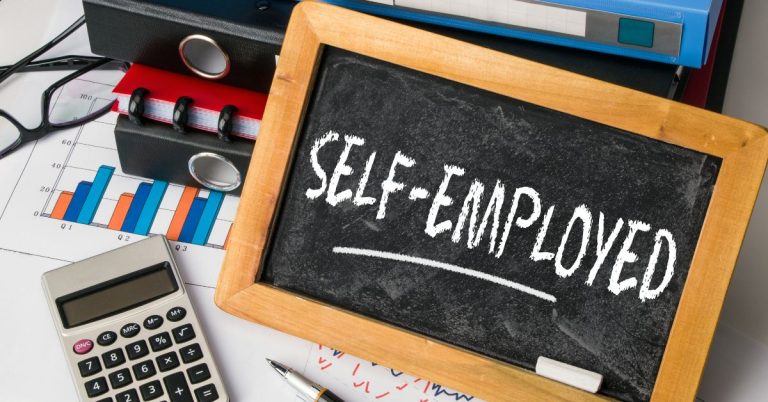State Pension Self Employed: How To Get One
There are many different types of pensions schemes available to people who are employed by someone else. These include defined benefit schemes, where you receive a fixed amount of money every month until you die; defined contribution schemes, where you pay into a fund and take out a set amount each month; and personal pensions, where you invest some of your salary yourself. You might choose one of these depending on how much risk you want to take, how long you intend to live, whether you prefer certainty over flexibility, and what tax advantages there are.
Self-employed people must decide which kind of pension scheme suits them. This depends on things like how old you are, how much you earn, what sort of risks you want to take, and what tax breaks you qualify for. If you don’t know which option is best for you, it makes sense to talk to a financial adviser about your situation.

Pensions for the self-employed
There are many differences between how employee and self-employed people manage their pensions. For example, some employers provide a range of benefits such as life insurance and healthcare, while others don’t. Some employers pay contributions into a pension scheme for their employees, while others make payments directly to the individual. And there are many different ways to structure a pension plan for the self-employed. This article looks at two main options – ISAs and IRAs.
A defined benefit pension provides a guaranteed income for retirement. The amount you receive depends on the length of your career and the number of hours worked each week. These plans are usually paid for by employers, although some self-employed people choose to contribute towards their pensions themselves. A defined benefit pension is often called “final salary”.
An alternative type of pension is a defined contribution plan. You put money away over a period of time, and it grows tax free. Your employer makes regular contributions to your account, based on what you earn. In return, you make regular contributions too. Defined contribution pensions are sometimes known as “money purchase” pensions because you buy a financial product rather than receiving a payment. They’re often referred to as “private pensions”, even though most people use them through their workplace.
The final option is a hybrid pension. Hybrid pensions combine elements of both defined benefit and defined contribution pensions. Like defined contribution pensions, they allow you to save money without making regular contributions. But like defined benefit pensions, they guarantee a fixed sum upon retirement.
What are the many types of pension plans?
There are two main types of pensions schemes – defined benefit and defined contribution – both of which provide benefits based on how much you contribute into the policy. Defined Benefit pensions pay out a fixed amount each month for the rest of your life. This type of pension is usually paid by companies, government bodies and trade unions.
Defined Contribution pensions work differently. You put money into a fund over a set period of time, such as 40 years, and it grows tax free while you wait for your pension. When you retire, you withdraw some or all of what you’ve contributed plus interest.
Self Employment NI Contributions
If you run your own business and earn a salary, you can make contributions towards your state pension. These are called self employment NI contributions. If you do more than one job, you can claim up to £3,600 per year.
Personal Pensions
You might decide to take out a Personal Pension Policy if you want to start saving now. A Personal Pension Policy gives you access to part of your employer’s pension pot. Your employer makes regular contributions into the pot, and you receive a monthly payment once you reach retirement age.
What are the guidelines for contributing to pensions?
The amount you can save towards your retirement depends on where you live. In Scotland, there are no limits on contributions to defined benefit schemes. Employees can put up to £40,000 per annum into their workplace pension pot while contractors can contribute up to £20,000.
In England, Wales and Northern Ireland, employees can put up to £25,000 per annum while contractors can contribute up t0 £15,000.
Employees in the rest of the UK can put up to £23,000 per annum and contractors can put up to £12,500.
If you work in one of these countries and want to know how much you can contribute, check out our calculator here.
What tax exemptions are available for payments?
For most people, it’s a good idea to save up money for retirement – and one way you can do this is by saving into a pension. But what happens if you want to take advantage of some tax relief on your NICs? You might think that you won’t qualify because you haven’t contributed enough, but you actually could.
The amount of tax relief depends on how much you contribute each month. If you’re under 35, you can make monthly contributions of up to £2,500 without losing any tax relief. However, once you turn 25, you lose access to this benefit unless you earn less than £16,250. And if you’re over 65, you can claim tax relief on your NIC contributions, even if you don’t make any yourself.
If you’ve already saved up for your pension, you might be wondering whether you can still claim tax relief on your contributions. Yes, you can! As long as you’ve made your contributions before April 5th 2016, you can treat them as having been paid on the fifth day of the following year. So if you’d normally pay your NICs on the 30th of every month, you can now treat them as having been done on April 5th 2017, meaning you can get tax relief on them.
What is the annual maximum amount I can contribute to my pension?
If you are receiving a state pension it will depend on how much money you earn during the tax year. For example, if you earned £10,000 you could potentially contribute up to £4,500 into your pension pot. You must keep track of what you earn throughout the year and report it on your annual self assessment form.
A pension is taxed like other types of investment income. In addition, there is a limit on how much you can claim each year. This is known as your personal allowance. This is different from your basic rate tax band because it doesn’t change depending on whether you’re single or married.
The personal allowance is set at £11,850 for 2018/19. However, if you are aged 65 or older you can increase your personal allowance to £12,475.
When may I begin receiving my private pension?
Generally speaking, the earliest you can start claiming your pension is at age 50. However, there are some exceptions. If you’ve been unemployed since April 5th 2016, you can start taking your pension earlier. You can also claim if you’ve worked less than 10 hours per week for three months in a row.
There’s a minimum amount of cash you must save before you can receive your pension. This varies depending on how old you are. For example, if your pension starts at 65, you’ll need £30,000 in savings. But if you’re under 60, you’ll need £20,000.
Frequently Asked Questions
What earnings we consider while calculating your benefit
The government pays benefits based on how much you earn, and it takes off money from your wages to cover things like taxes and national insurance. But there are some exceptions. Here’s how we work out your benefit.
You might think that because you don’t receive any income, you shouldn’t have to pay anything towards your state pension. But you do. You pay National Insurance contributions – the same way everyone else does. And you pay tax too. So, even though you aren’t earning any money, you still contribute towards your state pension. This is called the contributory element of your state pension.
For example, let’s say you make £50,000 per annum. Your employer contributes 11% into your pension scheme, meaning you contribute £5500 per annum. If you’re single, your National Insurance contribution is £2,500. If you’ve got children, you’ll pay £1,200 for each child.
If you’re married and you both work full-time, you’ll pay £3,600 in National Insurance, plus £7,800 in tax. In total, you’ll be paying around £16,400 per annum.
This doesn’t include the additional amounts you pay towards your state pension. For example, if you’re single and you’re over 55, you’ll start receiving a basic state pension of £107.45 per week. However, if you’ve been contributing to a workplace pension scheme, you’ll also receive an additional amount of around £14.30 per week. This brings your weekly state pension up to £121.75.
So, you might be thinking, why am I paying National Insurance and tax? Well, it’s because you’re being paid less than the average wage. Let’s assume you’re making £50,000 per year. The average UK salary is £26,944.
That means you’re getting paid about £13,000 less than the average person. Because of this, the government wants to ensure people are able to afford to live comfortably once they stop working. That’s where your state pension comes in.
How are self-employed earnings calculated?
If you run a small business, you must report your net profit or loss each week. You calculate your profits or losses based on what you earn and spend during the previous seven days.






